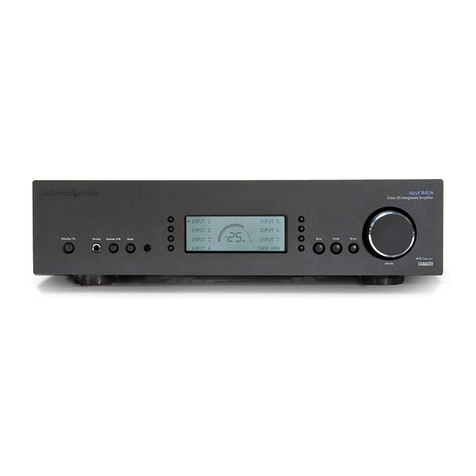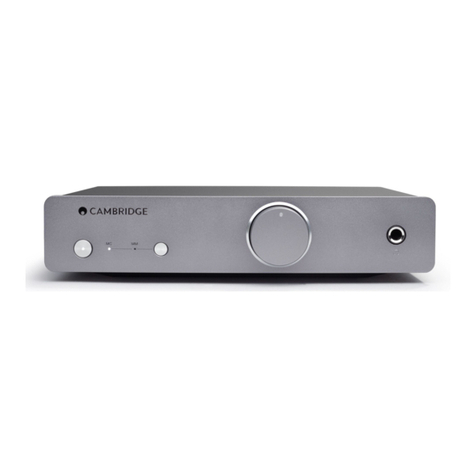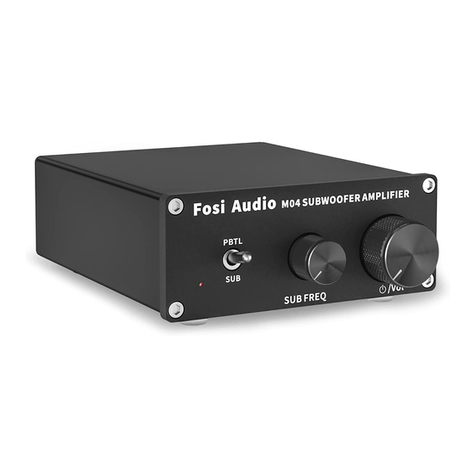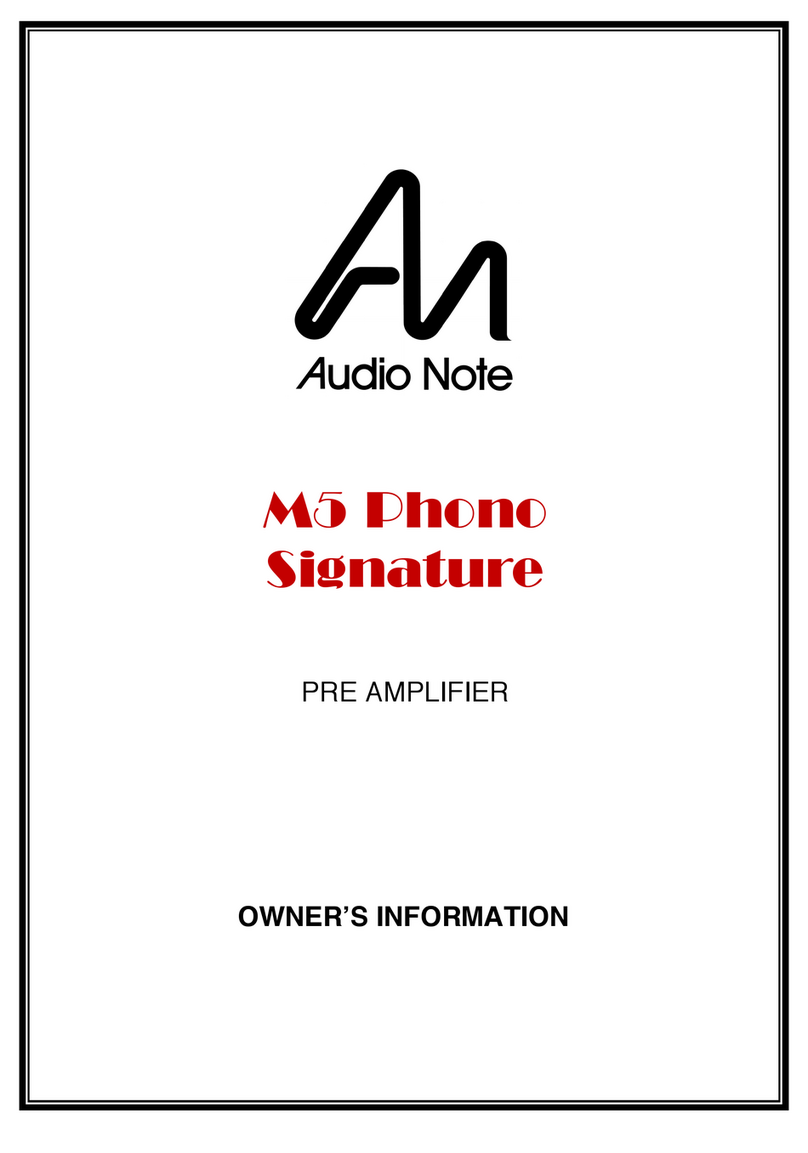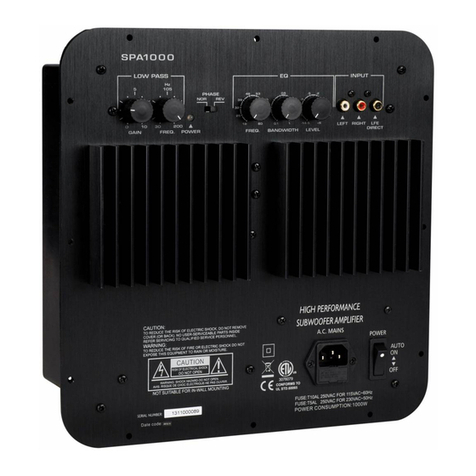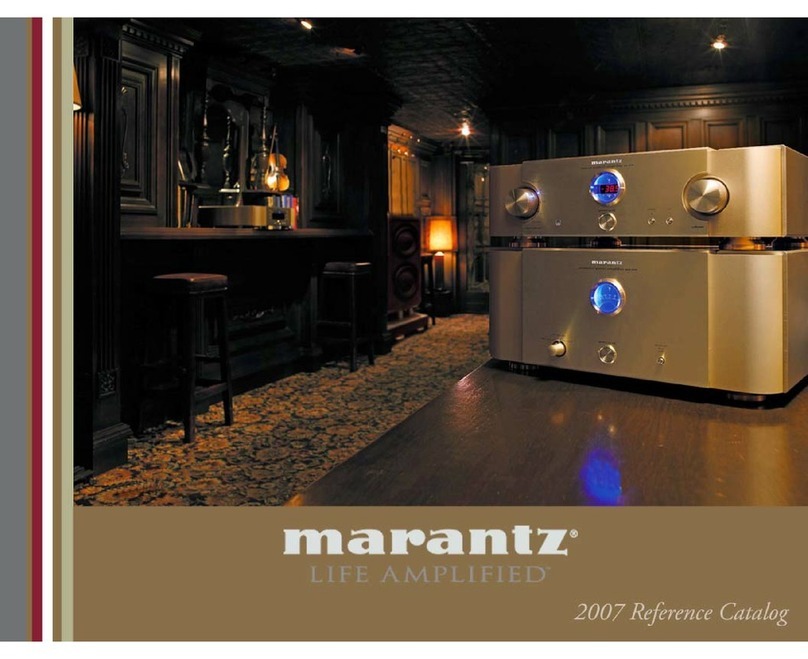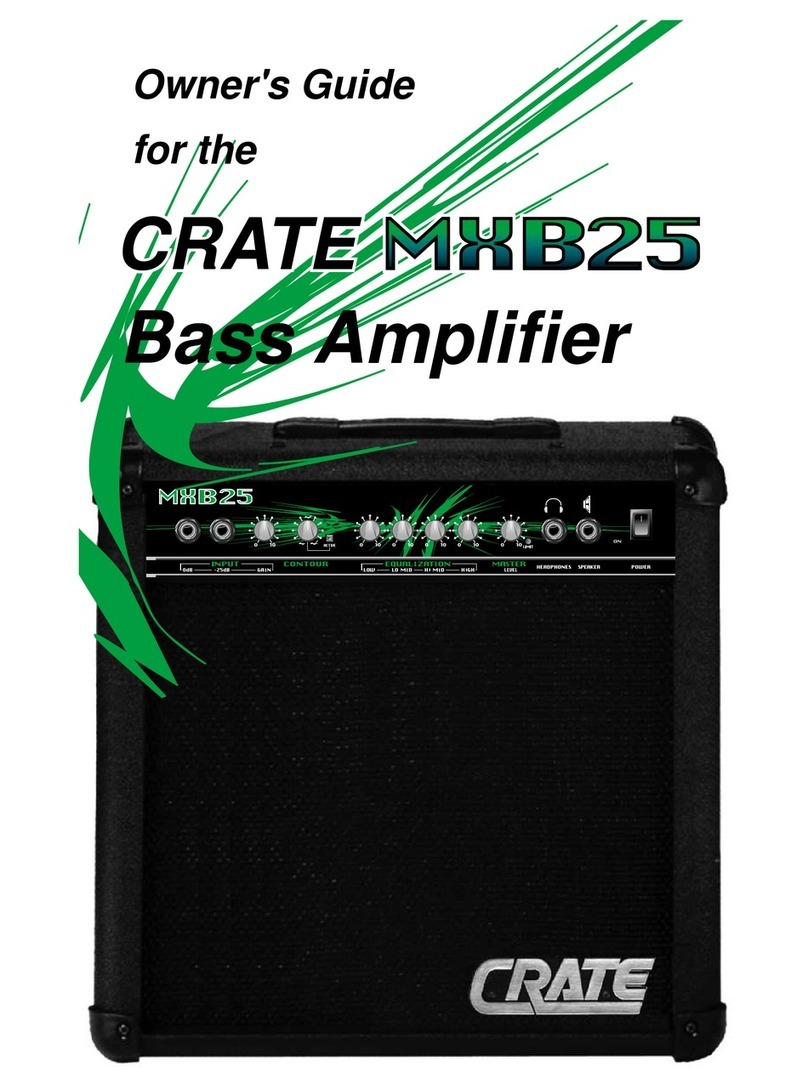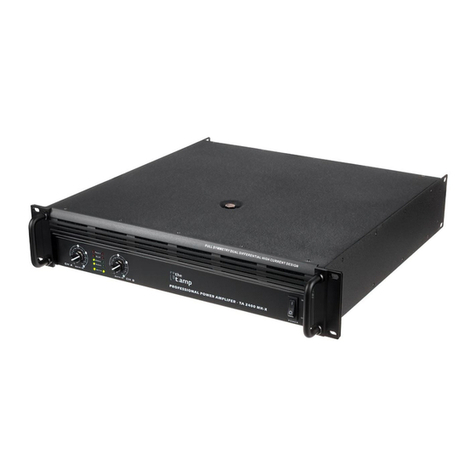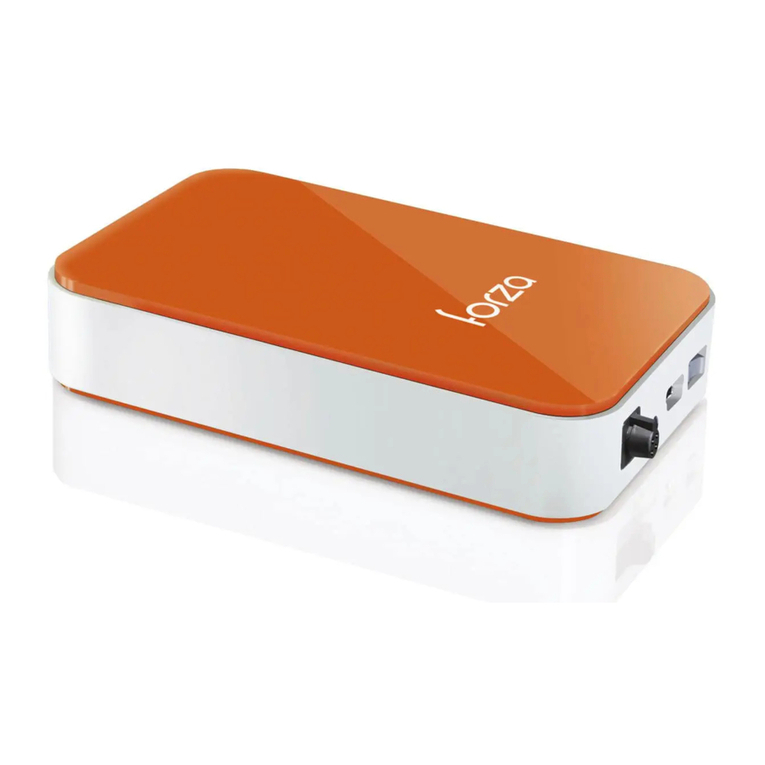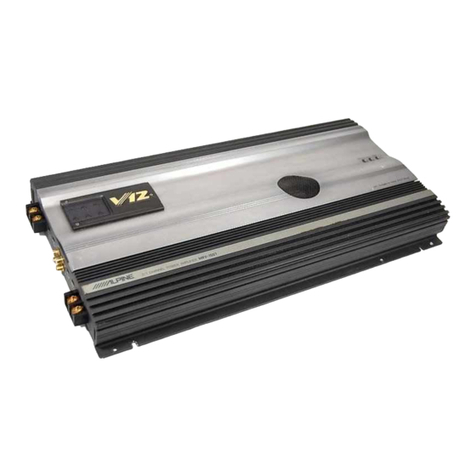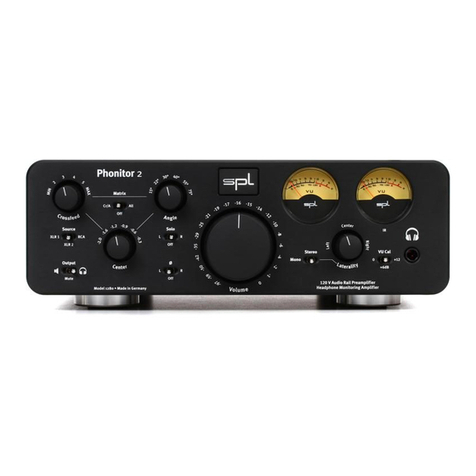Keysight Technologies InfiniiMax Ultra Series User manual

Keysight InfiniiMax Ultra Series
Probe Amplifiers and Probe Heads
User’s Guide

Notices
© Keysight Technologies, 2021
No part of this manual may be reproduced in
any form or by any means (including elec-
tronic storage and retrieval or translation
into a foreign language) without prior agree-
ment and written consent from Keysight
Technologies, Inc. as governed by United
States and international copyright laws.
Manual Part Number
MX0020-97000
Edition
First Edition, August 2021
Published by:
Keysight Technologies, Inc.
1900 Garden of the Gods Road
Colorado Springs, CO 80907 USA
Warranty
The material contained in this docu-
ment is provided “as is,” and is subject
to being changed, without notice, in
future editions. Further, to the maxi-
mum extent permitted by applicable
law, Keysight disclaims all warranties,
either express or implied, with regard
to this manual and any information
contained herein, including but not
limited to the implied warranties of
merchantability and fitness for a par-
ticular purpose. Keysight shall not be
liable for errors or for incidental or
consequential damages in connection
with the furnishing, use, or perfor-
mance of this document or of any infor-
mation contained herein. Should
Keysight and the user have a separate
written agreement with warranty terms
covering the material in this document
that conflict with these terms, the war-
ranty terms in the separate agreement
shall control.
Technology Licenses
The hardware and/or software described in
this document are furnished under a license
and may be used or copied only in accor-
dance with the terms of such license.
U.S. Government Rights
The Software is "commercial computer soft-
ware," as defined by Federal Acquisition
Regulation ("FAR") 2.101. Pursuant to FAR
12.212 and 27.405-3 and Department of
Defense FAR Supplement ("DFARS")
227.7202, the U.S. government acquires
commercial computer software under the
same terms by which the software is cus-
tomarily provided to the public. Accordingly,
Keysight provides the Software to U.S. gov-
ernment customers under its standard com-
mercial license, which is embodied in its
End User License Agreement (EULA), a copy
of which can be found at
http://www.keysight.com/find/sweula. The
license set forth in the EULA represents the
exclusive authority by which the U.S. gov-
ernment may use, modify, distribute, or dis-
close the Software. The EULA and the
license set forth therein, does not require or
permit, among other things, that Keysight:
(1) Furnish technical information related to
commercial computer software or commer-
cial computer software documentation that
is not customarily provided to the public; or
(2) Relinquish to, or otherwise provide, the
government rights in excess of these rights
customarily provided to the public to use,
modify, reproduce, release, perform, dis-
play, or disclose commercial computer soft-
ware or commercial computer software
documentation. No additional government
requirements beyond those set forth in the
EULA shall apply, except to the extent that
those terms, rights, or licenses are explicitly
required from all providers of commercial
computer software pursuant to the FAR and
the DFARS and are set forth specifically in
writing elsewhere in the EULA. Keysight
shall be under no obligation to update,
revise or otherwise modify the Software.
With respect to any technical data as
defined by FAR 2.101, pursuant to FAR
12.211 and 27.404.2 and DFARS 227.7102,
the U.S. government acquires no greater
than Limited Rights as defined in FAR 27.401
or DFAR 227.7103-5 (c), as applicable in any
technical data. 52.227-14 (June 1987) or
DFAR 252.227-7015 (b)(2) (November
1995), as applicable in any technical data.
Safety Notices
CAUTION
A CAUTION notice denotes a hazard.
It calls attention to an operating
procedure, practice, or the like that,
if not correctly performed or
adhered to, could result in damage
to the product or loss of important
data. Do not proceed beyond a CAU-
TION notice until the indicated con-
ditions are fully understood and
met.
WARNING
A WARNING notice denotes a haz-
ard. It calls attention to an operat-
ing procedure, practice, or the like
that, if not correctly performed or
adhered to, could result in personal
injury or death. Do not proceed
beyond a WARNING notice until the
indicated conditions are fully
understood and met.

3
Contents
1 MX0020A/21A/22A/24A/25A Probe Amplifiers - Overview
Introduction 10
InfiniiMax Ultra Series Probe Amplifiers Key Features 12
Compatibility with Keysight Oscilloscopes 14
2 Compatible Probe Heads and Accessories - Overview
Supported Probe Heads for InfiniiMax Ultra Series Probe Amplifiers 16
InfiniiMax Ultra Series Probe Family Diagram 17
When to Use Which Recommended Probe Head 18
Other Recommended Accessories and Kits 21
N5450B Extreme Temperature Cable Extension Kit 21
N2880A InfiniiMax In-Line Attenuator Kit 21
N2881A InfiniiMax DC Blocking Capacitors 22
MX0102A Soldering Toolkit 22
N2852A AutoProbe II to AutoProbe III Adapter 25
Performance Verification and Deskew Fixture Kits 25
N5448B (25cm) / N2823A (1m) Coaxial Phase Matched Cable Pair 26
N2812B (1m) High Performance Input Cable 27
E2669B Differential Connectivity Kit 27
3 Safety and Regulatory Information
Safety Checks and Warnings 32
Instrument Markings and Symbols 34
4 Proper Handling of Probe Amplifier and Probe Heads
Avoiding Damage and Costly Repairs 36
Using a static-safe workstation 36
Probe Amplifier and Probe Heads Handling Precautions 38
Precautions for the Probe Amplifier 38
Precautions for the Probe Cable 38
Precautions while Connecting and Disconnecting Probe Heads 39
Safely Connecting/Disconnecting the Probe Amplifier and Oscilloscope 39
Safely Connecting/Disconnecting the Probe Amplifier and Probe Head 39
Moving the Probing Setup to Different Probing Locations 39
Strain Relieving Techniques for Probe Heads 41
Tack-putty 42

4 InfiniiMax Ultra Series Probe Amplifiers & Probe Heads User’s Guide
Low-temperature hot glue 42
Velcro Pads 43
Tips for Soldering Probe Heads 44
Cleaning 45
5 Characteristics and Specifications
InfiniiMax Ultra Series Probe Amplifiers Warranted Specifications 48
InfiniiMax Ultra Series Probe Amplifier Characteristics 49
InfiniiMax Ultra Probe Heads Characteristics 51
Environmental and General Characteristics 52
6 MX0100A InfiniiMax Micro Probe Head
Overview 54
MX0100A Probe Head Kit Components 55
Connecting the MX0100A Probe Head to DUT 55
InfiniiMode Capable 55
MX0100A Dimensions 55
MX0100A Input Impedance 57
Setting up and Using the MX0100A Probe Head 60
Trimming the Lead Wires of MX0100A Probe Head 60
Soldering an MX0100A Probe Head to DUT 61
Attaching Ground Lead Wires to an MX0100A Probe Head 63
Maintaining the MX0100A Probe Head 64
MX0100A Probe Head Handling Precautions 64
Replacing the MX0100A Probe Tip Lead Wires 67
Extreme Temperature Testing with the MX0100A Probe Head 70
7 MX0106A InfiniiMax Ultra Differential Solder-in Probe Head
Overview 72
InfiniiMode Capable 72
MX0106A Probe Head Supplied Accessories 72
MX0106A Dimensions 72
MX0106A Input Impedance 74
Setting up and Using the MX0106A Probe Head 77
Adjusting the Spacing between MX0106A Wires 77
Installing / Replacing the MX0106A Probe Head Wire Leads 77
Connecting the MX0106A Probe Head to DUT 81
Soldering the MX0106A Probe Head to DUT 81
Extreme Temperature Testing with the MX0106A Probe Head 82
8 N2839A InfiniiMax II Browser Probe Head
Overview 84
N2839A Browser Probe Head Components 84

InfiniiMax Ultra Series Probe Amplifiers & Probe Heads User’s Guide 5
N2839A Supplied Accessories 84
N2839A Dimensions 85
N2839A Input Impedance 86
Using the N2839A Browser Probe Head 89
Adjusting Spacing Between the Browser Tips 89
Hands-Free Probing 89
Maintaining the N2839A Probe Head 91
N2839A Probe Head Handling Precautions 91
Location of Serial Number 91
Replacing the Browser’s Tips 92
9 MX0105A InfiniiMax Ultra Differential SMA Probe Head
Overview 96
MX0105A Probe Head Components 96
InfiniiMode Capable 97
MX0105A Dimensions 98
MX0105A SPICE Subcircuit Data 99
MX0105A Input Return Loss (S11) 100
10 N5425B InfiniiMax Differential ZIF Probe Head
Overview 102
Supported ZIF Tips 102
N5425B Probe Head and ZIF Tips Dimensions 104
N5425B Input Impedance 106
SPICE Model of N5425B Probe Head with N5426A ZIF Tip Attached 107
SPICE Deck of N5425B Probe Head with N5426A ZIF Tip Attached 108
SPICE Model of the N5426A ZIF Tip 110
SPICE Deck of N5426A ZIF Tip 111
Using the N5425B Probe Head with N5426A ZIF Tips 113
Using the N5425B Probe Head with N2884A Fine Wire ZIF Tip 118
Maintaining the N5425B Probe Head 125
Fine Wire ZIF Tips Handling Precautions 125
11 Configuring Infiniium Software for InfiniiMax Ultra Series Probe Amplifiers and Probe Heads
Selecting Components Used in the Probing Setup 128
Configuring Offset Behavior 131
Calibrating your InfiniiMax Ultra Probe 133
Calibration Overview 133
Sequence of Calibration 133
Before You Start Calibration 133
Performing DC Gain / Offset and Skew Calibration 134
Choosing the Probe Response Option 139
What is Probe Response Correction? 139

6 InfiniiMax Ultra Series Probe Amplifiers & Probe Heads User’s Guide
Available Probe Response Options 139
Source Estimate Option Availability 140
How to Change Probe Response Option 140
How to Determine the Currently Active Probe Response Option 141
Examples 141
12 Making Measurements
Measurement Modes - Overview 144
Orientation of the Probe Head 145
Probing Single-ended Signals 146
Scenario 1: Using the Differential or Differential Source Estimate Measurement Mode
(Non-InfiniiMode) 146
Scenario 2: Using the Single-Ended A or Single-Ended B Measurement Mode (InfiniiMode) 147
Probing Differential Signals 148
Scenario 1: Using the Differential or Differential Source Estimate Measurement Mode
(Non-InfiniiMode) 148
Scenario 2: Using the Differential Measurement Mode (InfiniiMode) 149
Making InfiniiMode Measurements 150
What is InfiniiMode? 150
How InfiniiMode Works 150
InfiniiMode Capable Probe Amplifiers and Probe Heads 151
InfiniiMode Measurements Setup 151
Attaching Ground Lead Wires to an InfiniiMode Capable Probe Head 152
InfiniiMode Measurements and Available Bandwidth 155
Extreme Temperature Probing 156
InfiniiMax Ultra Probe Heads Supporting Extreme Temperature Testing 156
Probe Heads Discoloration 156
Cautions Associated with Extreme Temperature Testing 157
Probing Ungrounded Devices 158
Blocking out the DC Component of the Input Signal 159
13 InfiniiMax Ultra Series Probe Amplifiers and Probe Heads System Responses
Typical Corrected System Frequency Response 162
Typical Step Response of Corrected System 163
Typical CMRR 164
14 Performance Verification
Before you Start 168
Recommended Test Interval 168
To Test Bandwidth 169
Required Test Equipment 169
Procedure 170
Performance Test Record 175

8 InfiniiMax Ultra Series Probe Amplifiers & Probe Heads User’s Guide

9
InfiniiMax Ultra Series Probe Amplifiers and Probe Heads
User’s Guide
1MX0020A/21A/22A/24A/25A
Probe Amplifiers - Overview
Introduction 10
InfiniiMax Ultra Series Probe Amplifiers Key Features 12
Compatibility with Keysight Oscilloscopes 14
This user’s guide describes how to set up and use the following InfiniiMax Ultra
series probe amplifiers and probe heads.
Probe Amplifiers
MX0020A 10 GHz with AutoProbe II Interface
MX0021A 13 GHz with AutoProbe II Interface
MX0022A 16 GHz with AutoProbe II Interface
MX0024A 20 GHz with AutoProbe II Interface
MX0025A 25 GHz with AutoProbe II Interface
Probe Heads
MX0100A InfiniiMax Micro Probe Head
MX0105A InfiniiMax Differential SMA Probe Head
MX0106A InfiniiMax Differential Solder-in Probe Head
N2839A InfiniiMax II Browser Probe Head
N5425B InfiniiMax Differential ZIF Probe Head

10 InfiniiMax Ultra Series Probe Amplifiers & Probe Heads User’s Guide
1MX0020A/21A/22A/24A/25A Probe Amplifiers - Overview
Introduction
The InfiniiMax Ultra series probe amplifiers provide high bandwidth (maximum up
to 25 GHz) and an RC input impedance profile for extremely low mid-band loading,
which is necessary to address modern high-speed probing requirements.
You can use these amplifiers to probe differential as well as single-ended signals.
These amplifiers support a wide variety of flexible connectivity solutions, covering
today's emerging signaling standards such as DDR5/LPDDR5 and other
high-speed signal debug and validation test needs.
With an extensive range of supported probe heads and accessories, these probe
amplifiers cater to most of the probing situations including harder to probe small
geometry target devices and extreme environment testing.
Figure 1 An InfiniiMax Ultra Series Probe Amplifier
Table 1 InfiniiMax Ultra Series Probe Amplifier Components
Probe Amplifier Component Description/Usage
Output Connector The MX0020A/21A/22A/24A/25A probe amplifiers have the
Keysight AutoProbe II (3.5 mm) interface that allow these to
connect to a compatible Keysight oscilloscope (see page 14).
The oscilloscope’s AutoProbe interface provides the probe power,
probe offset, and auto configuration of probe type and attenuation
setting on connection.
Output Connector
(with AutoProbe II
Connection to
Oscilloscope)
Probe Head Connector
Menu Button
Polarity Markings
Channel Identification
Rings
Ground Connection Probe Response
Button

MX0020A/21A/22A/24A/25A Probe Amplifiers - Overview 1
InfiniiMax Ultra Series Probe Amplifiers & Probe Heads User’s Guide 11
Probe Response Button Press this button to switch between the following two probe
response options available for the MX0020A/21A/22A/24A/25A
probe amplifiers.
•True View (Vout/Vin)
•Source Estimate (Vout/Vsource assuming a 25 Wsource
impedance)
Each probe response option has an associated LED on the probe
amplifier. The LED for the currently active probe response option
lights up green.
(See page 139 to get details on these probe response options.)
Menu Button Press this button to bring up the Infiniium GUI’s Probe
Configuration dialog box on the oscilloscope. Use this dialog box
to configure probe settings (see page 127).
Channel Identification Rings When multiple probes are connected to the oscilloscope, use the
channel identification rings to associate the channel inputs with
each probe. Place one colored ring near the probe’s output
connector and place an identical color ring near the probe head
connector.
Polarity Markings (A and B) Polarity markings to indicate the A (+) and B (-) inputs of the probe
amplifier.
Probe Head Connector Use this connector to connect your probe amplifier to one of the
supported probe heads (see page 16).
Ground Connection Allows you to connect the DUT ground to the probe amplifier
ground using a ground lead wire.
This is needed if the DUT is not grounded to the oscilloscope via
the AC mains ground (see page 158).
Table 1 InfiniiMax Ultra Series Probe Amplifier Components
Probe Amplifier Component Description/Usage

12 InfiniiMax Ultra Series Probe Amplifiers & Probe Heads User’s Guide
1MX0020A/21A/22A/24A/25A Probe Amplifiers - Overview
InfiniiMax Ultra Series Probe Amplifiers Key Features
Probe Response
Options
The MX0020A/21A/22A/24A/25A probe amplifiers support the following two
probe response options:
InfiniiMode
Capable
All InfiniiMax Ultra series probe amplifiers are InfiniiMode capable. An InfiniiMode
capable probe amplifier when used with an InfiniiMode capable probe head allows
you to make single-ended A, single-ended B, differential as well as
common-mode measurements using the same probing setup. You do not need to
reconnect the probe leads or change connections for these different
measurements.
See page 150 to know more about InfiniiMode and how to set up the probe
hardware and software to make InfiniiMode measurements.
Yielding Accurate
Measurements
These probe amplifiers have built-in probe specific s-parameter correction filter to
ensure a flat frequency response. This unique s-parameter of the probe amplifier is
used with the s-parameters of various supported probe heads to further flatten the
magnitude and phase response of the probe for high accuracy measurements.
Each probe head has different s-parameters stored in the oscilloscope’s firmware.
On selecting the probe head in the oscilloscope’s software, the appropriate s-
parameters for the probe head are used in conjunction with the probe amplifier’s
s-parameters to compute the overall probe correction for your measurement case.
“RC" Input
Impedance
Architecture
The RC architecture of these probe amplifiers make these suitable for probing
buses that transition to a “high Z” state or for probing signals with high
impedance.
See Also: Demystifying RCRC and RC probes Application Note
Three Input
Attenuation
Ranges
These probe amplifiers support the following three flexible input dynamic ranges.
• 600 mVpp @ 1:1
True View Vout/Vin correction to show the voltage at the tip of the probe as loaded by the
probe.
Source Estimate Vout/Vsource correction to show an estimate of the voltage at the probe point as if
the probe is not there (assumes a 25 Wsource impedance).
- VIn represents a signal with the probe’s effect included (the voltage at the probe’s tip).
- Vsource represents a signal at the probe point before the probe is connected.
- Vout represents the signal as passed through the probe.
See page 139 to know how to set up and use these options.

MX0020A/21A/22A/24A/25A Probe Amplifiers - Overview 1
InfiniiMax Ultra Series Probe Amplifiers & Probe Heads User’s Guide 13
• 2.5 Vpp @ 4:1
• 5 Vpp @ 8:1
The input range is automatically configured depending on the vertical scale of the
oscilloscope.
High Bandwidth
Probing
Requirements
These probe amplifiers efficiently fulfill the probing bandwidth requirements
between 10-25 GHz. For instance, MX0025A is best suited for serial links
operating up to 12 Gbps that require the probe bandwidth up to 25 GHz.
Applicable
System
Bandwidth
For any combination of a probe head with these probe amplifiers, the applicable
system bandwidth is the lesser of the supported bandwidths of the probe head or
the probe amplifier. For instance, the MX0025A supports 25 GHz bandwidth.
Therefore, if, for example, you use it with the MX0106A probe head, which
supports a 23 GHz bandwidth, then this combination would produce a system
with a 23 GHz bandwidth.

14 InfiniiMax Ultra Series Probe Amplifiers & Probe Heads User’s Guide
1MX0020A/21A/22A/24A/25A Probe Amplifiers - Overview
Compatibility with Keysight Oscilloscopes
Is your oscilloscope software up-to-date?
Keysight periodically releases software updates to support your probe, fix known defects, and
incorporate product enhancements. To download the latest firmware, go to www.Keysight.com and
search for your oscilloscope’s model number. Click the “Drivers, Firmware & Software” tab under the
Technical Support link.
Compatible Oscilloscope Adapter Required
Required Infiniium
Software Version
Infiniium Oscilloscopes with AutoProbe II Interface
UXR-Series (3.5 mm models) none 11.20 or higher
90000-Q/X/Z and V-Series none 6.70 or higher
Infiniium Oscilloscopes with AutoProbe III Interface
UXR-Series (1 and 1.85 mm
models)
N2852A AutoProbe II to AutoProbe
III Adapter
(Visit
http://www.keysight.com/find
/N2852A to know more about this
adapter.)
11.20 or higher
NOTE
These probe amplifiers are NOT compatible with Infiniium 9000 Series,
InfiniiVision, or any previous generation Keysight oscilloscopes.

15
InfiniiMax Ultra Series Probe Amplifiers and Probe Heads
User’s Guide
2Compatible Probe Heads and
Accessories - Overview
Supported Probe Heads for InfiniiMax Ultra Series Probe Amplifiers 16
InfiniiMax Ultra Series Probe Family Diagram 17
When to Use Which Recommended Probe Head 18
Other Recommended Accessories and Kits 21
N5450B Extreme Temperature Cable Extension Kit 21
N2880A InfiniiMax In-Line Attenuator Kit 21
N2881A InfiniiMax DC Blocking Capacitors 22
MX0102A Soldering Toolkit 22
N2852A AutoProbe II to AutoProbe III Adapter 25
Performance Verification and Deskew Fixture Kits 25
E2655C PV/Deskew Fixture Kit 25
MX0104A PV/Deskew Fixture Kit 26
N5448B (25cm) / N2823A (1m) Coaxial Phase Matched Cable Pair 26
N2812B (1m) High Performance Input Cable 27
E2669B Differential Connectivity Kit 27
This chapter provides an overview of various probe heads and accessories that are
available for use with the InfiniiMax Ultra series probe amplifiers.

16 InfiniiMax Ultra Series Probe Amplifiers & Probe Heads User’s Guide
2Compatible Probe Heads and Accessories - Overview
Supported Probe Heads for InfiniiMax Ultra Series Probe
Amplifiers
A probe amplifier connects to a DUT via a probe head.
When using an InfiniiMax Ultra series probe amplifier, you can choose from a wide
variety of probe heads and accessories to support your specific probing and DUT
connectivity requirements.
The probe heads available for InfiniiMax Ultra series probe amplifiers are primarily
categorized as follows:
Recommended Probe Heads Where to Find Detailed Information
New InfiniiMax Ultra Probe Heads
(supporting higher bandwidths up to 25
GHz)
•MX0100A Micro
•MX0105A Differential SMA
•MX0106A Differential Solder-in
•N2839A Browser
•N5425B Differential ZIF (with N5426A
and N2884A ZIF tips)
Detailed information on each of these
probe heads is available as separate
chapters in this guide.
Existing InfiniiMax I and II Probe Heads
(supporting bandwidths up to 12 GHz)
•N2851A Differential QuickTip
•N5381B Differential Solder-in
•E2677B Differential Solder-in
•E2678B Differential Socketed
•N5425B Differential ZIF (with N5451A
Long Wire ZIF Tips)
Detailed information on each of these
probe heads is available in the
Keysight 1168/9B-Series Differential
and Single-Ended Probes user’s guide.
This guide is available for download
from
www.keysight.com/find/1169B.
Other Compatible Probe Heads Where to Find Detailed Information
Most of the existing InfiniiMax I and II
probe heads are compatible for use
with InfiniiMax Ultra series probe
amplifiers.
•E2675B Differential Browser
•E2676B InfiniiMax Single-ended
Browser
•E2679B Single-ended Solder-in
•N2887A Soft Touch Pro
•N2888A Soft Touch Pro Half-Channel
•N5380B Differential SMA (soon to be
discontinued)
See the Probe Resource center
(https://www.keysight.com/find/
PRC) for detailed information on each
of these probe heads.
NOTE
InfiniiMax III and III+ probe heads are NOT compatible for use with the
InfiniiMax Ultra series probe amplifiers.

Compatible Probe Heads and Accessories - Overview 2
InfiniiMax Ultra Series Probe Amplifiers & Probe Heads User’s Guide 17
InfiniiMax Ultra Series Probe Family Diagram

18 InfiniiMax Ultra Series Probe Amplifiers & Probe Heads User’s Guide
2Compatible Probe Heads and Accessories - Overview
When to Use Which Recommended Probe Head
The following table provides a high-level comparison of the recommended probe
heads to help you assess when to use which probe head with your InfiniiMax Ultra
series probe amplifier.
These probe heads are listed in the order of their maximum supported bandwidth
when used with an InfiniiMax Ultra series probe amplifier.
Table 2 Recommended Probe Heads (Sheet 1 of 3)
Probe Head (listed in the order of BW) Recommended Usage Bandwidtha
Cdiff b
(pF)
Cse c
(pF)
1. MX0100A Micro Probe Head (refer to page 53 for details)
•Light, flexible, and smallest solder-in head
•Best suited for providing uncompromised
access to small geometry, high-density
fine-pitch targets
•Recommended for high-speed signaling
standards DDR4, DDR5, LPDDR4, LPDDR5,
MIPI D-Phy 2.0/3.0, C-Phy, and M-Phy
•InfiniiMode capable
25 GHz 0.17 pF 0.26 pF
2. MX0106A Differential Solder-in Probe Head (refer to page 71 for details)
•The most reliable semi-permanent signal
access for high fidelity measurement
•Hands-free access to fine-pitch
components in high-density electronics
•Recommended for MIPI D-Phy 2.0 and
C-Phy 2.0
•InfiniiMode capable
23 GHz 0.17 pF 0.29 pF
3. N2839A Differential Browser Probe Head (refer to page 83 for details)
•Hand-held browsing for general purpose
troubleshooting of a circuit board
•Adjustable probe tips for different circuit
geometries
21 GHz 0.20 pF 0.34 pF

Compatible Probe Heads and Accessories - Overview 2
InfiniiMax Ultra Series Probe Amplifiers & Probe Heads User’s Guide 19
4. MX0105A Differential SMA Probe Head (refer to page 95 for details)
•Suitable for differential cabled
measurement using only one channel of the
oscilloscope
•Offset matched SMA cables adapt to
variable spacing
•Ideal for signaling standards such as HDMI
and MIPI Mphy that require termination to a
common DC voltage (± 4 V) rather than a
ground
•InfiniiMode capable
20 GHz N/A N/A
5. N5425B Differential ZIF Probe Head (refer to page 101 for details)
•Ideal for probing multiple signals in tight
spaces such as DDR memory
•ZIFs can be installed at multiple locations
on your DUT
•Ideal for hard to reach, small fine pitch
targets
•ZIF feature allows connection without
compressing the delicate wires which
cannot support this compression
•Recommended for DDR4, DDR5, LPDDR4,
MIPI D-Phy 2.0 and C-Phy 2.0
With N5426A ZIF Tip
18 GHz 0.33 pF 0.53 pF
N2884A Fine Wire ZIF Tip
18 GHz 0.35 pF N/A
6. N2851A QuickTip Probe Head (refer to 1168/9B-Series Probes user’s guide)
•Easy, secure magnetic connection between
head and tip.
•Used with an N2849A QuickTip.
•Permanently solder any number of
QuickTips to your DUT and effortlessly
connect and disconnect probe head to
each QuickTip
13 GHz 0.72 pF 0.71 pF
Table 2 Recommended Probe Heads (Sheet 2 of 3)
Probe Head (listed in the order of BW) Recommended Usage Bandwidtha
Cdiff b
(pF)
Cse c
(pF)

20 InfiniiMax Ultra Series Probe Amplifiers & Probe Heads User’s Guide
2Compatible Probe Heads and Accessories - Overview
7. N5381B Differential Solder-in Probe Head (refer to 1168/9B-Series Probes user’s guide)
•Solder-in hands free connection
•Recommended for DDR4, DDR5, LPDDR4,
MIPI D-Phy 2.0
12 GHz 0.21 pF 0.35 pF
8. E2677B Differential Solder-in Probe Head (refer to 1168/9B-Series Probes user’s guide)
•Hands-free solder-in connection 12 GHz 0.27 pF 0.44 pF
9. E2678B Differential Socketed Probe Head (refer to 1168/9B-Series Probes user’s guide)
•Measuring signal via a plug-on socket
connection
•Removable connection using solder-in
resistor pins for hard to reach targets
12 GHz 0.34 pF 0.56 pF
10. N5425B ZIF Probe Head with Long Wire ZIF Tips (refer to 1168/9B-Series Probes user’s guide)
•The long-wired ZIF tips connection is ideal
for variable pitch targets, including larger
pitches
•Ideal for probing multiple signals in tight
spaces such as DDR memory
•ZIFs can be installed at multiple locations
on your DUT
•ZIF feature allows connection without
compressing the delicate wires which
cannot support this compression
•Recommended for DDR4, DDR5, LPDDR4,
MIPI D-Phy 2.0 and C-Phy 2.0
With 7mm N5451A ZIF Tip
~9.9 GHz
(0º tip span)
~4.4 GHz
(60º tip span)
0.6 pF 0.58 pF
With 11mm N5451A ZIF Tip
~5 GHz
(0º tip span)
~3.3 GHz
(60º tip span)
0.68 pF 0.68 pF
a The bandwidth listed in this table is the maximum bandwidth supported by each probe head. For any combination of a probe head with a probe
amplifier, the applicable bandwidth is the lesser of the supported bandwidths of the probe head or the probe amplifier. For example, using the
MX0025A, which supports a 25 GHz bandwidth, with a MX0106A, which supports a 23 GHz bandwidth, would produce a system with a 23 GHz
bandwidth.
b Capacitance seen by differential signals
c Capacitance seen by single-ended signals
Table 2 Recommended Probe Heads (Sheet 3 of 3)
Probe Head (listed in the order of BW) Recommended Usage Bandwidtha
Cdiff b
(pF)
Cse c
(pF)
This manual suits for next models
1
Table of contents
Other Keysight Technologies Amplifier manuals

Keysight Technologies
Keysight Technologies 1169A User manual
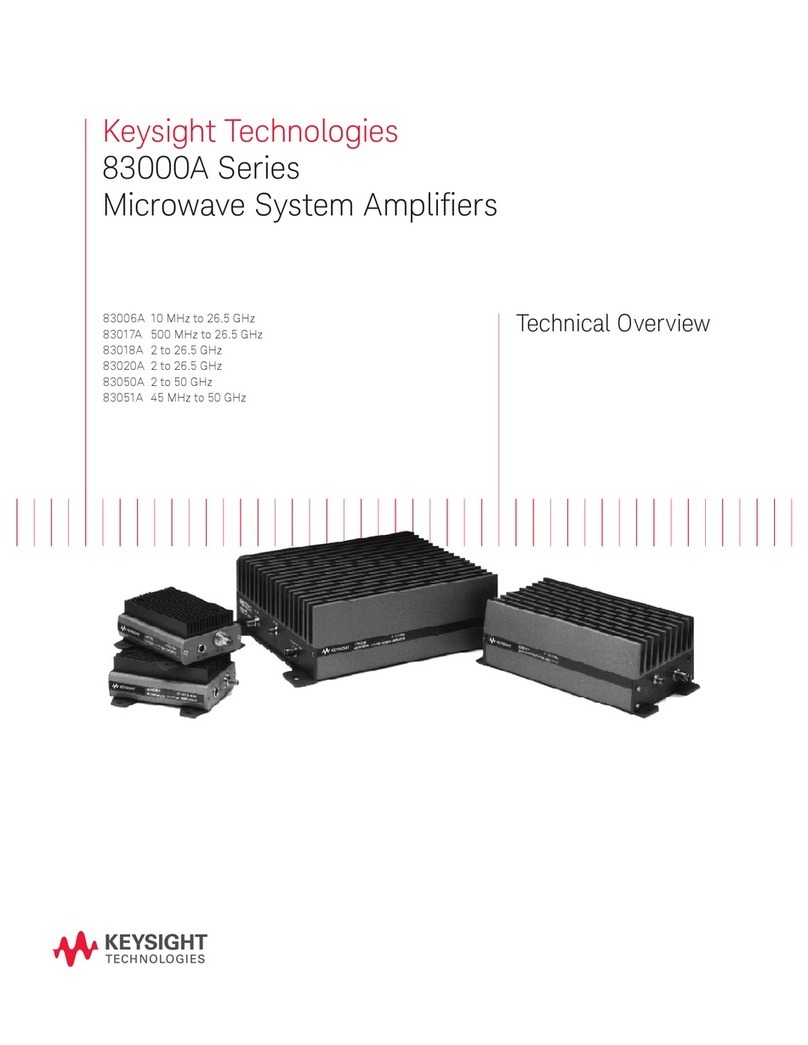
Keysight Technologies
Keysight Technologies 83000A Series Installation guide
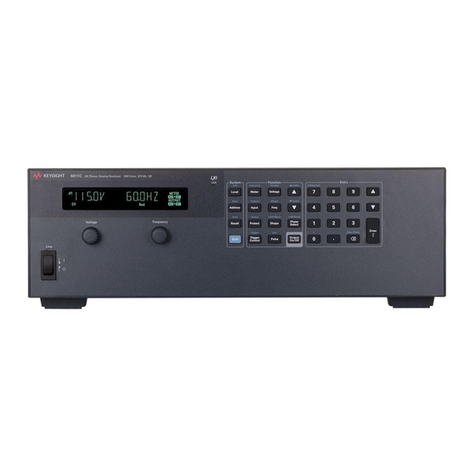
Keysight Technologies
Keysight Technologies 6811C User manual
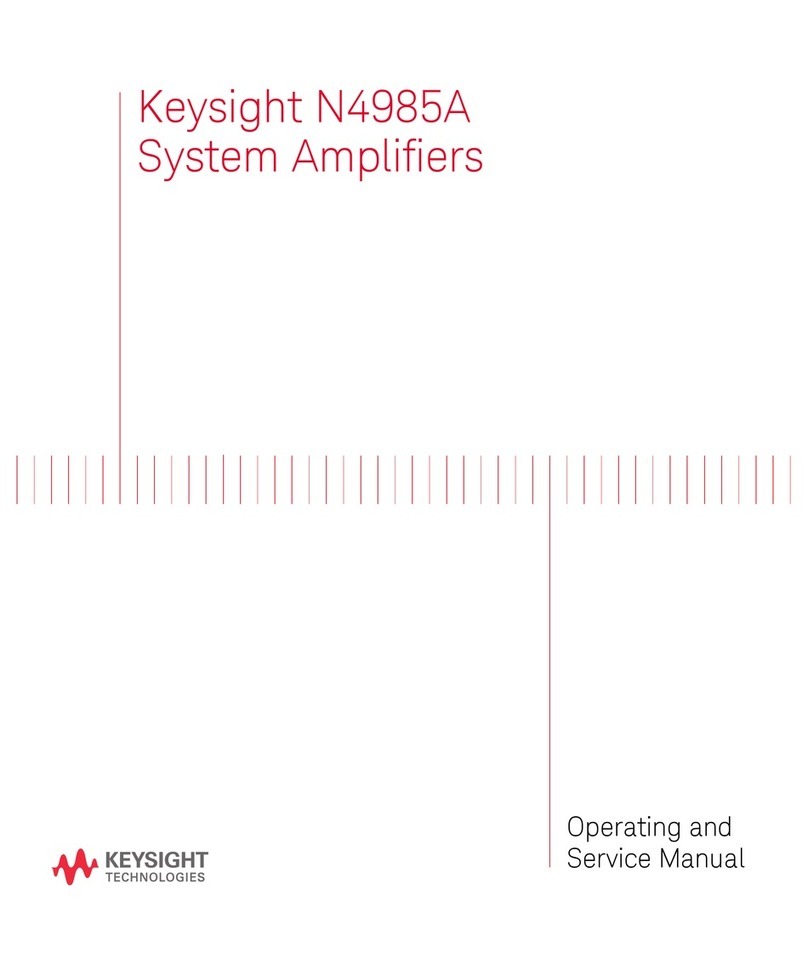
Keysight Technologies
Keysight Technologies N4985A-P15 Service manual
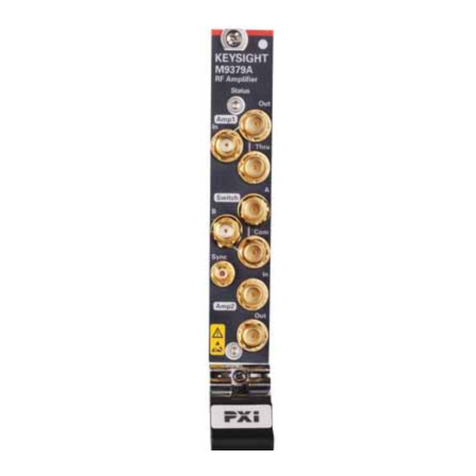
Keysight Technologies
Keysight Technologies M9379A User guide
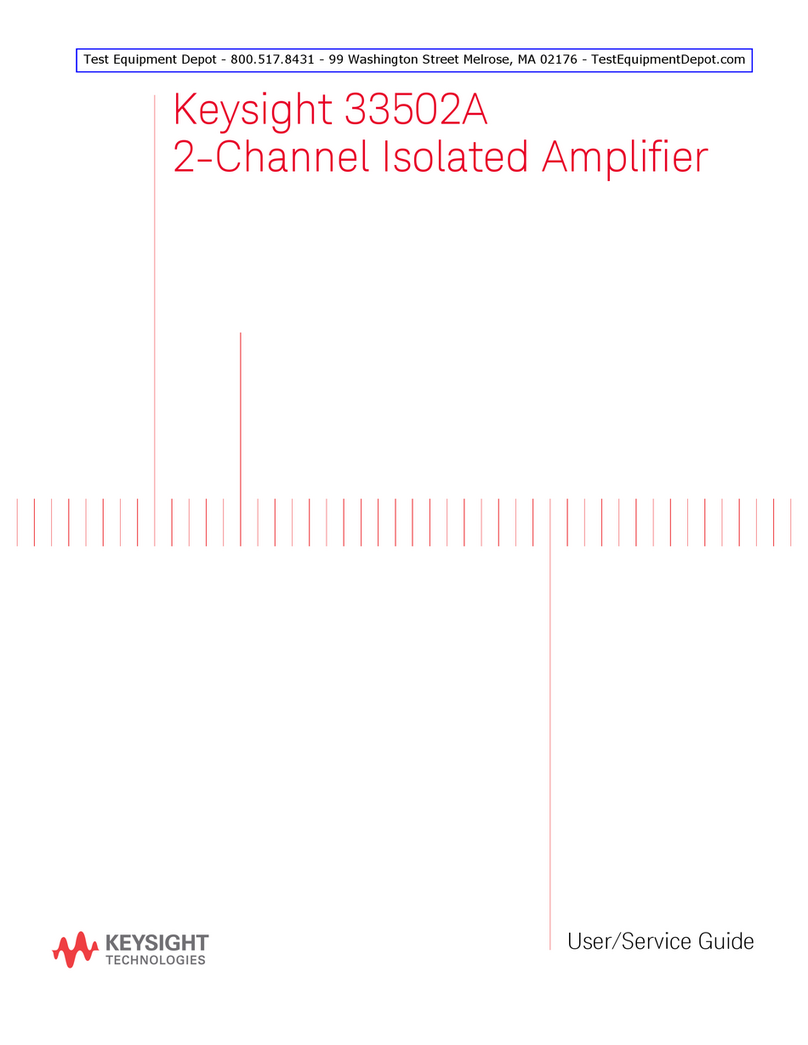
Keysight Technologies
Keysight Technologies 33502A User manual

